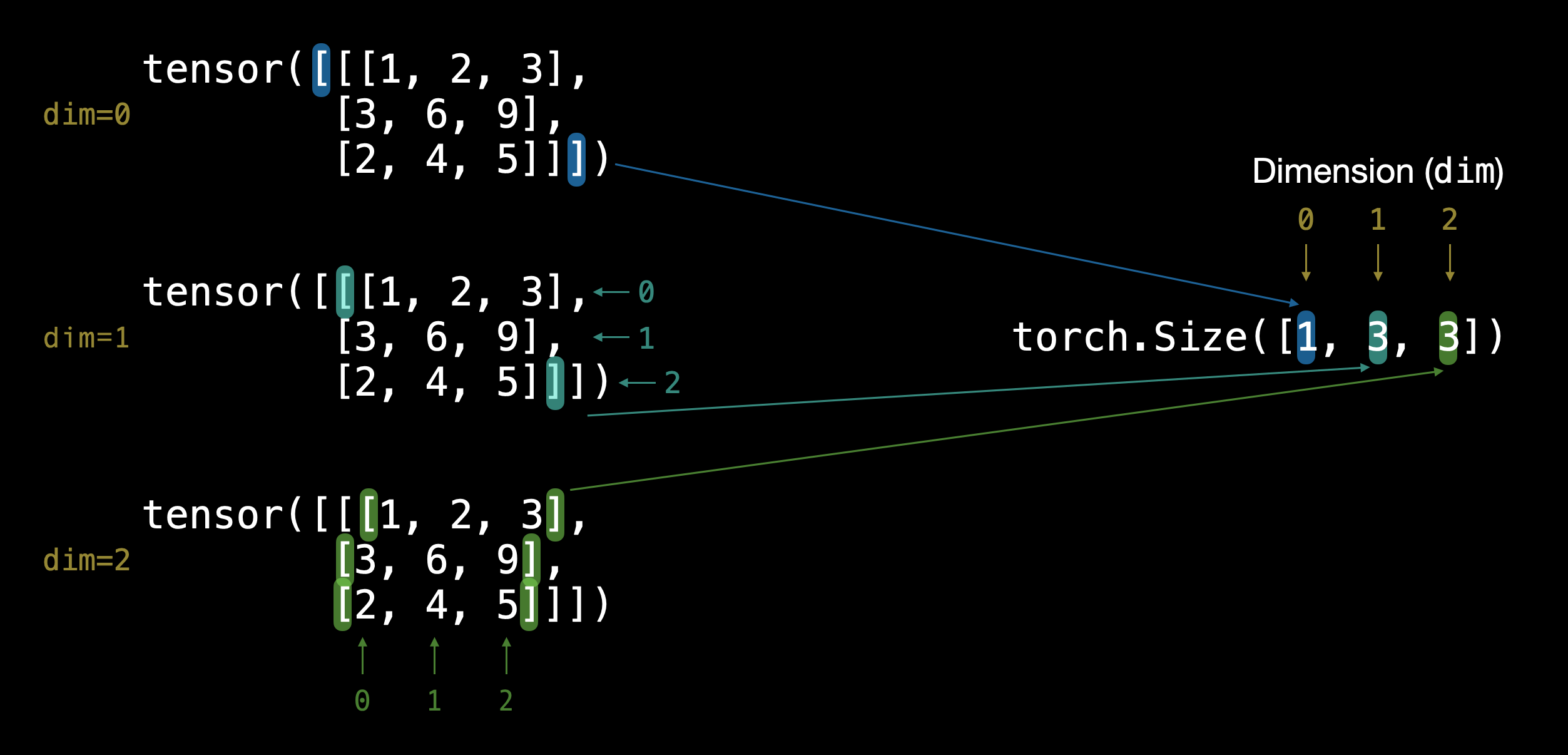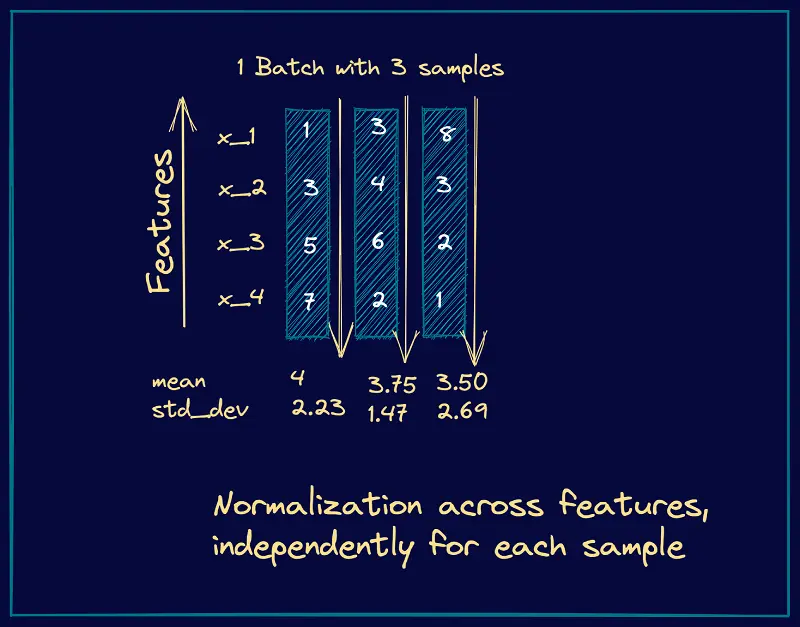PyTorch
https://bnikolic.co.uk/blog/fast-nonlinear-optimisation.html
Resources
Good codebases
# Split training set into training and validation (to detect overfitting)
train_dataset, val_dataset = torch.utils.data.random_split(
train_val_dataset, [0.95, 0.05]
)
Replacing Tensorflow as the state of the art DL model.
Tips:
- ALWAYS use
torch.compile
Torch
torch.cat() # This is INEFFICIENT
torch.unbindtorch.as_tensor
Visualizing a Tensor

When you index, you collapse down one of the dimensions.
Indexing
I swear this indexing messes with my brain. Consider the example below
X = torch.randn((32,3))
C = torch.randn((27,2))
C[X] # is valid
C[X].shape # torch.Size([32, 3, 2])Reshaping
I think torch can reshape by doing
X.view(-1, 6) # Reshape this, without changing it in view
X.reshape(-1) # this does it in place, it changes it permanentlyPyroch viewing https://wandb.ai/ayush-thakur/dl-question-bank/reports/An-Introduction-To-The-PyTorch-View-Function—VmlldzoyMDM0Nzg
input_HLK = input_LD.view(L, H, K).permute(1, 0, 2)- can also use with the permute function
Memory Layout
https://pytorch.org/docs/stable/generated/torch.Tensor.contiguous.html
Tranpose
Multiple transposes?
Transpose is essentially .permute().
Tensors
Tensors are the fundamental building block of machine learning. Their job is to represent data in a numerical way.
There is a difference between torch.tensor and torch.Tensor
torch.tensor # infers the type
torch.Tensor # doesn't infer the type, casts to float32import torch
# Scalars
scalar = torch.tensor(7)
scalar # tensor(7)
scalar.ndim # 0
scalar.items() # 7
vector = torch.tensor([7, 7])
# Initializing values
tensor = torch.rand((3, 4))
zeros = torch.zeros((3, 4))
ones = torch.ones((3, 4))
# Arithmetic
torch.matmul(tensor, tensor)
torch.mm(tensor, tensor) # Alternative syntax
tensor @ tensor # Same thing, actually faster
# Other functions
zero_to_ten = torch.arange(start=0, end=10, step=1)
ten_zeros = torch.zeros_like(input=zero_to_ten) # will have same shape
torch.max(x), torch.min(x)
tensor = torch.arange(10., 100., 10.)
tensor_float16 = tensor.type(torch.float16)The same operations can be done with NumPy
Tensor data types: https://pytorch.org/docs/stable/tensors.html#data-types
You can cast as float by using .float()
Dimensions of tensors

For Mac
Although we don’t have an Nvidia GPU, there has been added support. Use device = torch.device("mps")
Torch Argmax
Was getting a little confused on the indexing, so writing some notes so that we can do this.
Let’s visualize torch.argmax(x, dim=0) and torch.argmax(x, dim=1) using a small 2D tensor:
👇 Example tensor x (shape (3, 4)):
D →
0 1 2 3
┌─────────────────
B 0 │ 1 7 2 9
1 │ 4 3 8 6
2 │ 0 5 6 4
x.shape = (3, 4) → 3 rows (B = batch), 4 columns (D = features)

-
ahh this mental model picture is messing with my understanding, I needed a refresher on this
torch.argmax(x, dim=0) — along batch (dim=0)
- For each column, find the index of the max down the rows:
torch.argmax(x, dim=0) → tensor([1, 0, 1, 0]) # shape: (4,)- You’re scanning downward (↓) for each column.
torch.argmax(x, dim=1) — along features (dim=1)
For each row, find the index of the max across the columns:
-
Row 0 → max is
9at col 3 -
Row 1 → max is
8at col 2 -
Row 2 → max is
6at col 2
📤 Output:
python
CopyEdit
torch.argmax(x, dim=1) → tensor([3, 2, 2]) # shape: (3,)
You’re scanning rightward (→) for each row.
Ideas
These ops for MPS are not implemented. https://github.com/pytorch/pytorch/issues/77764